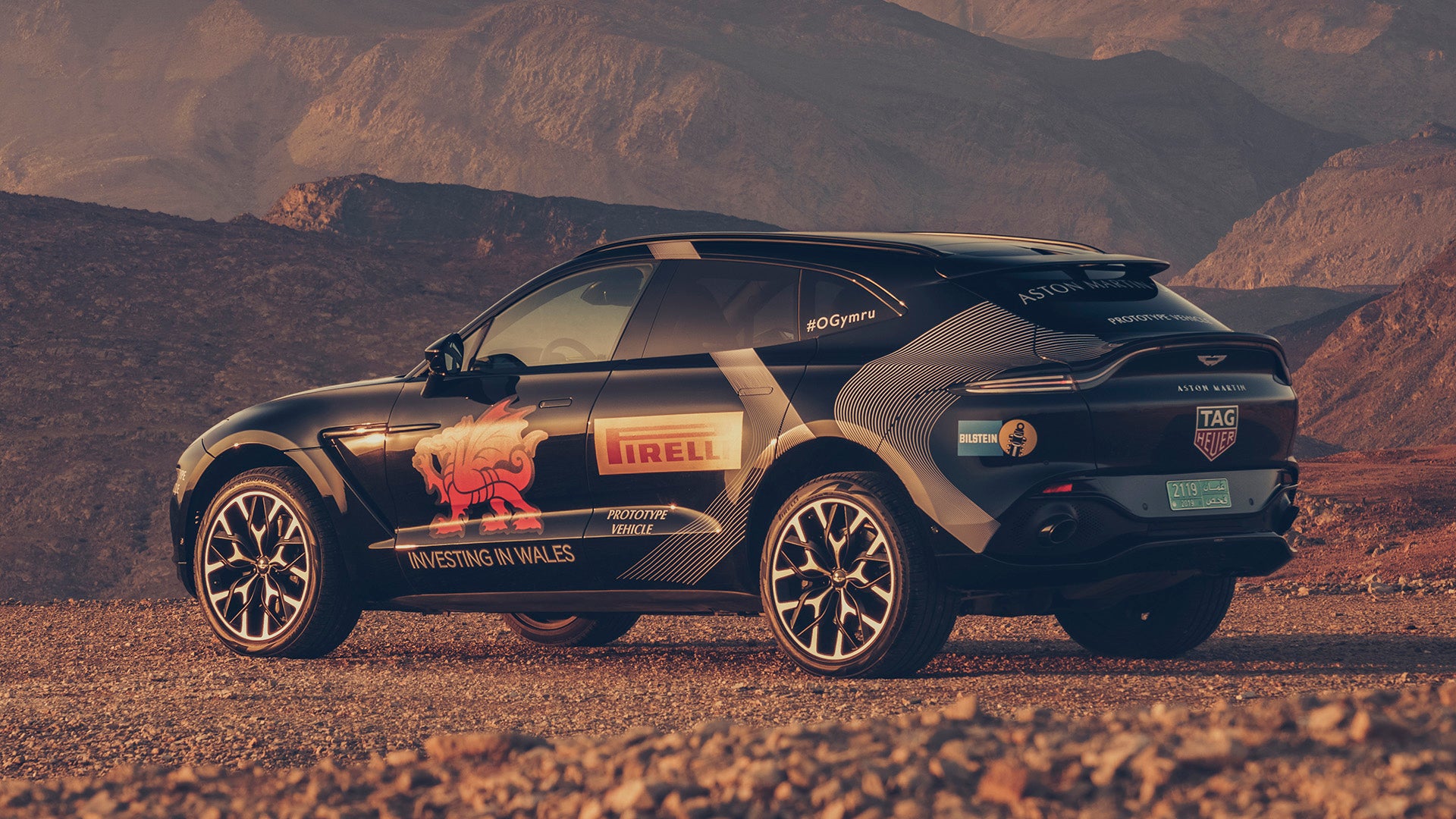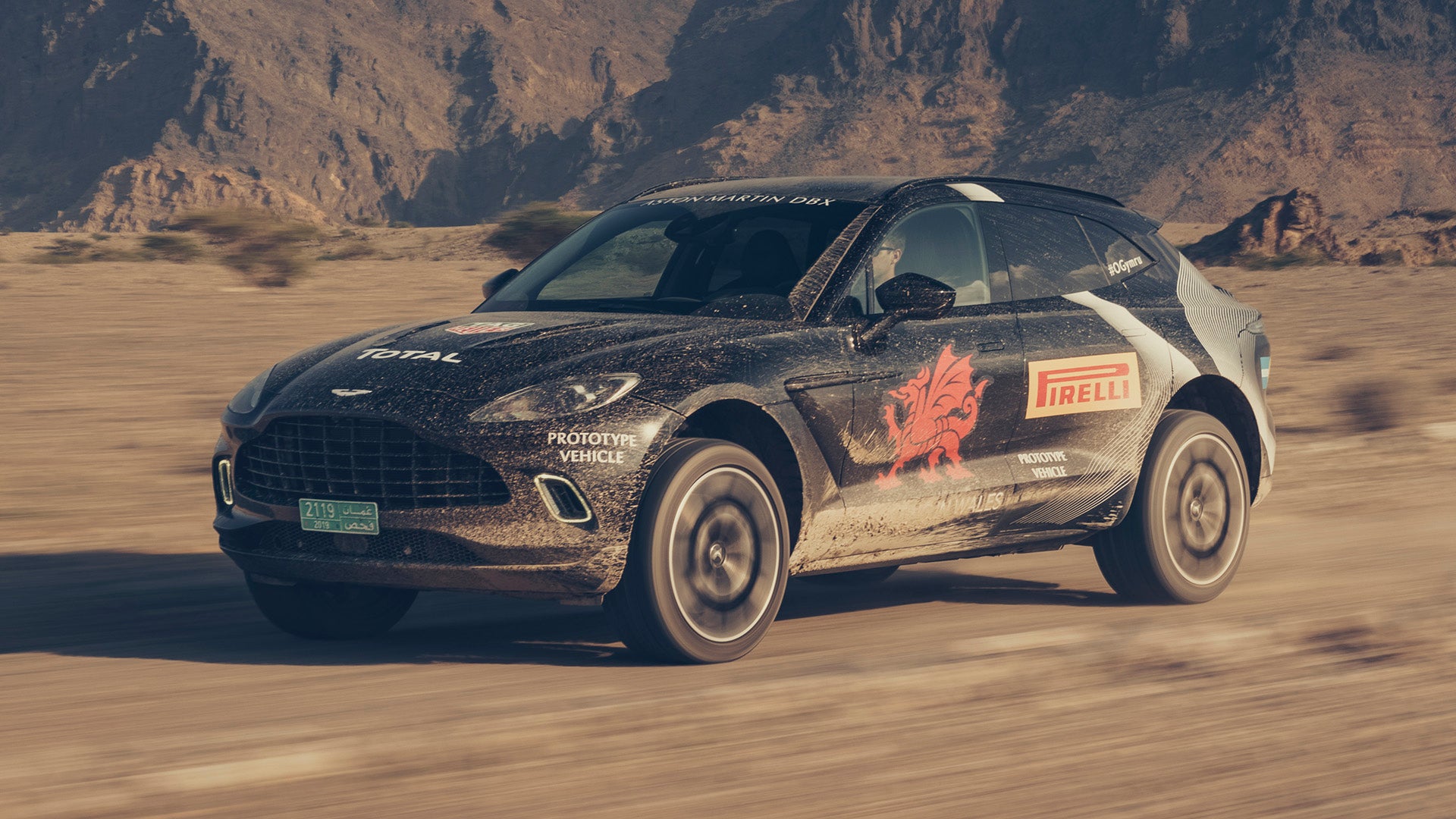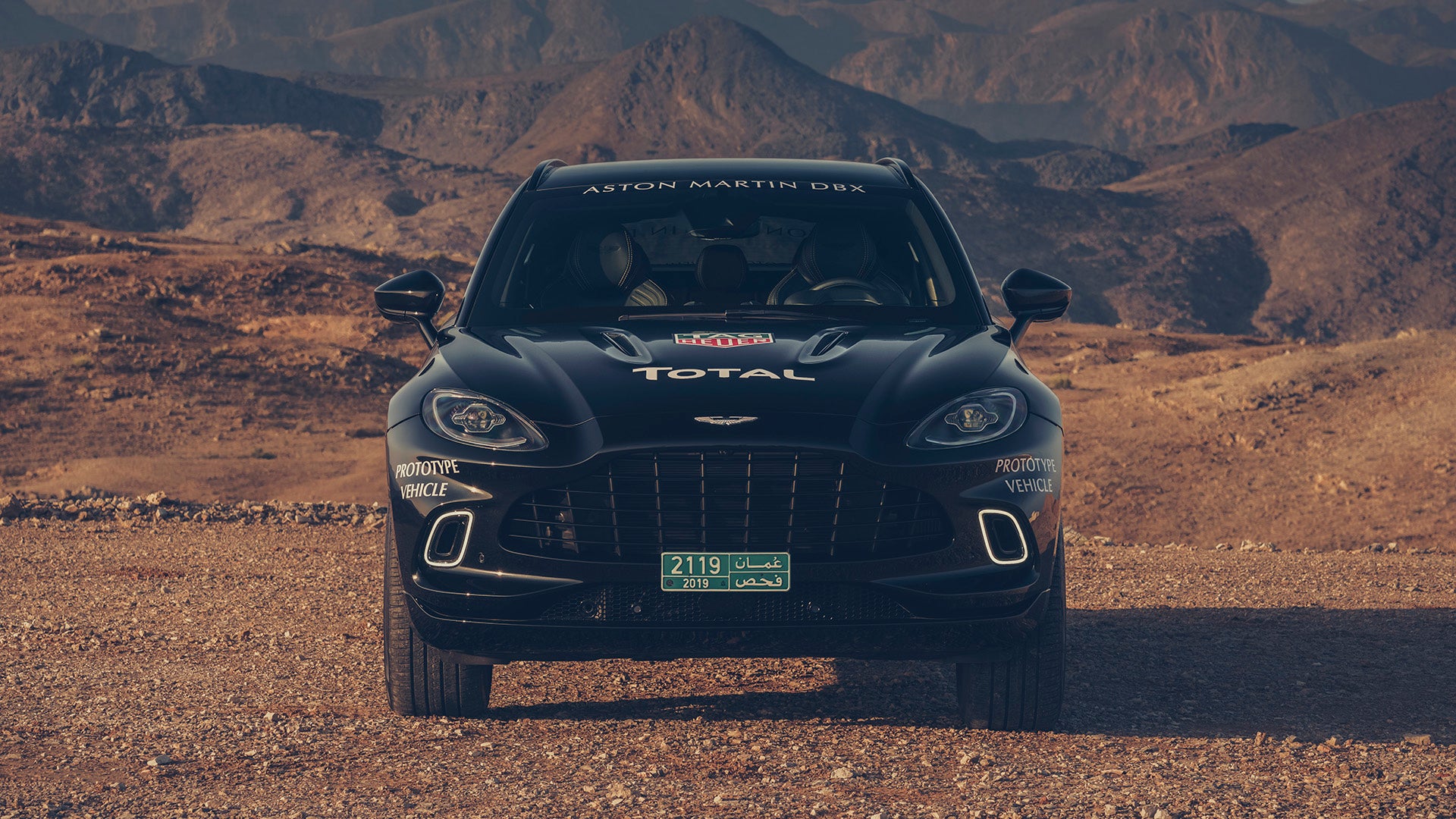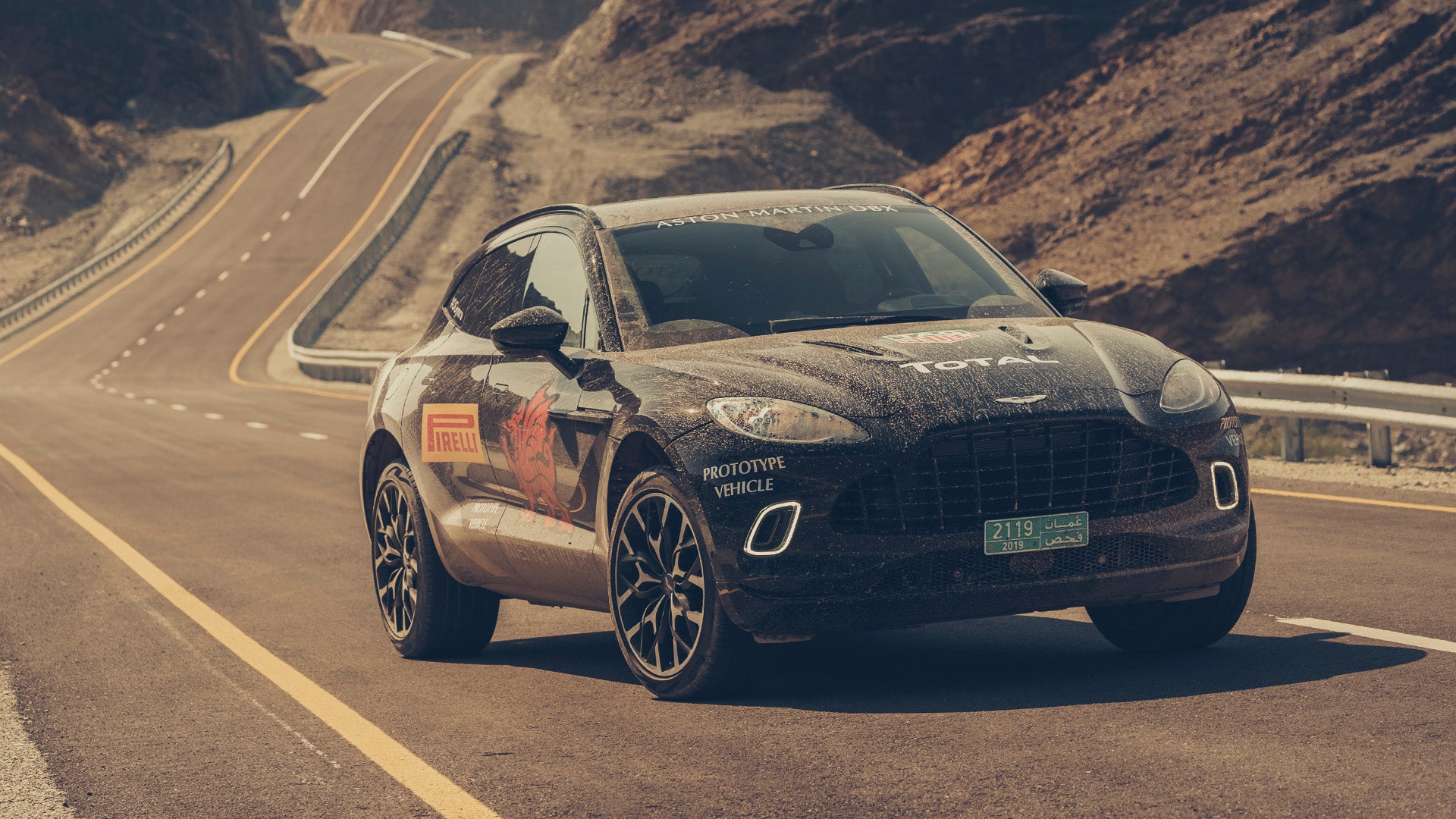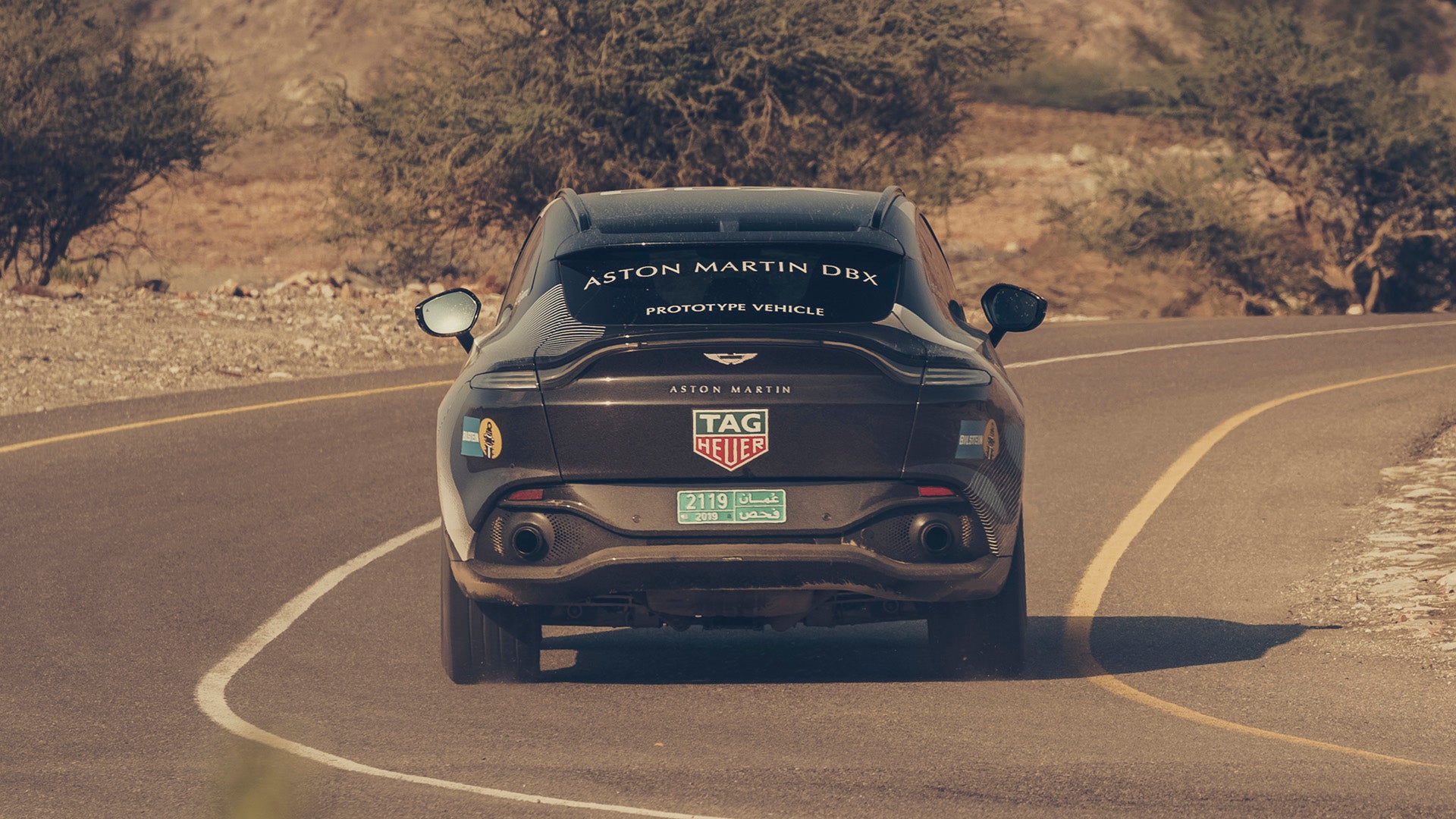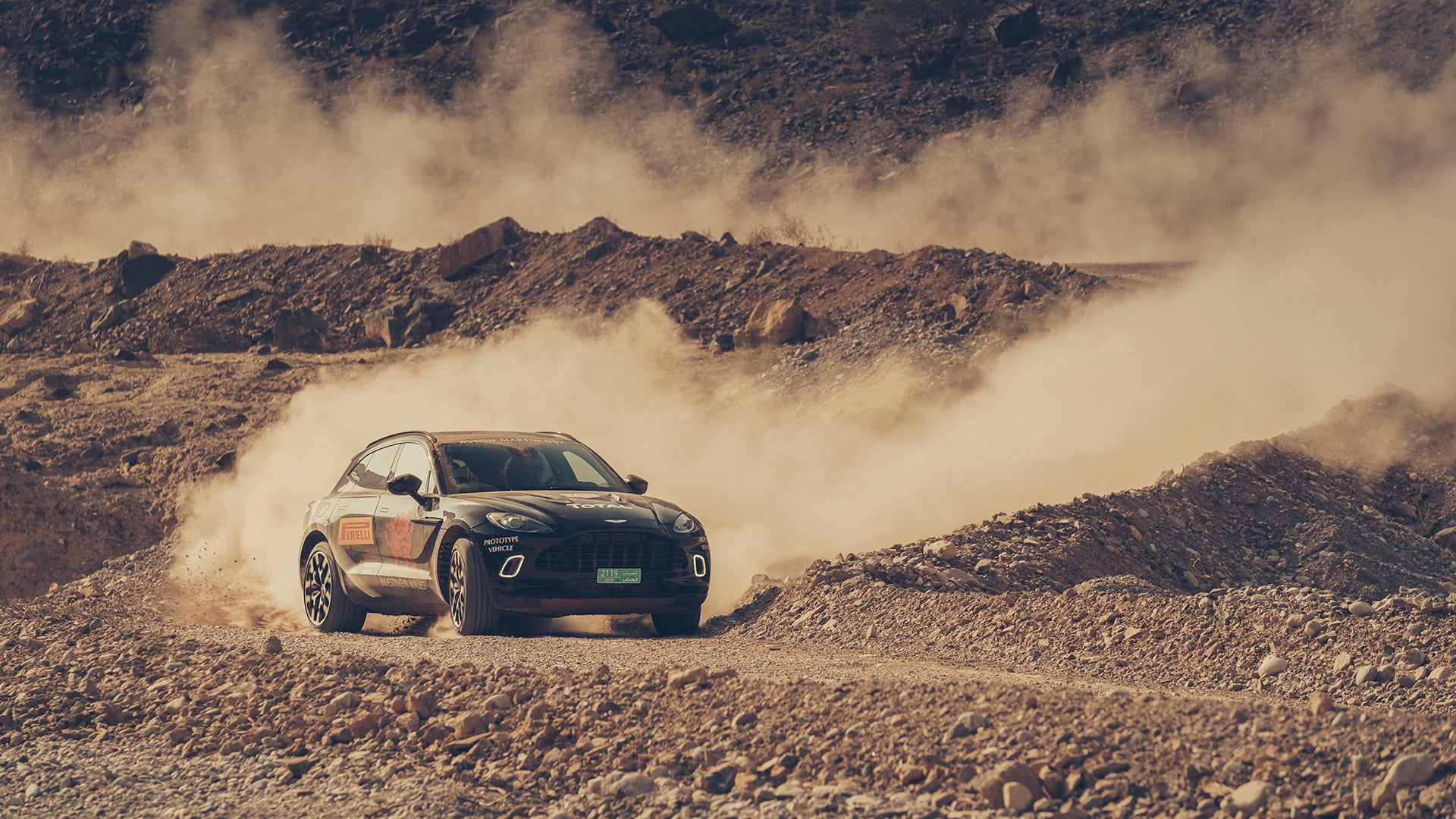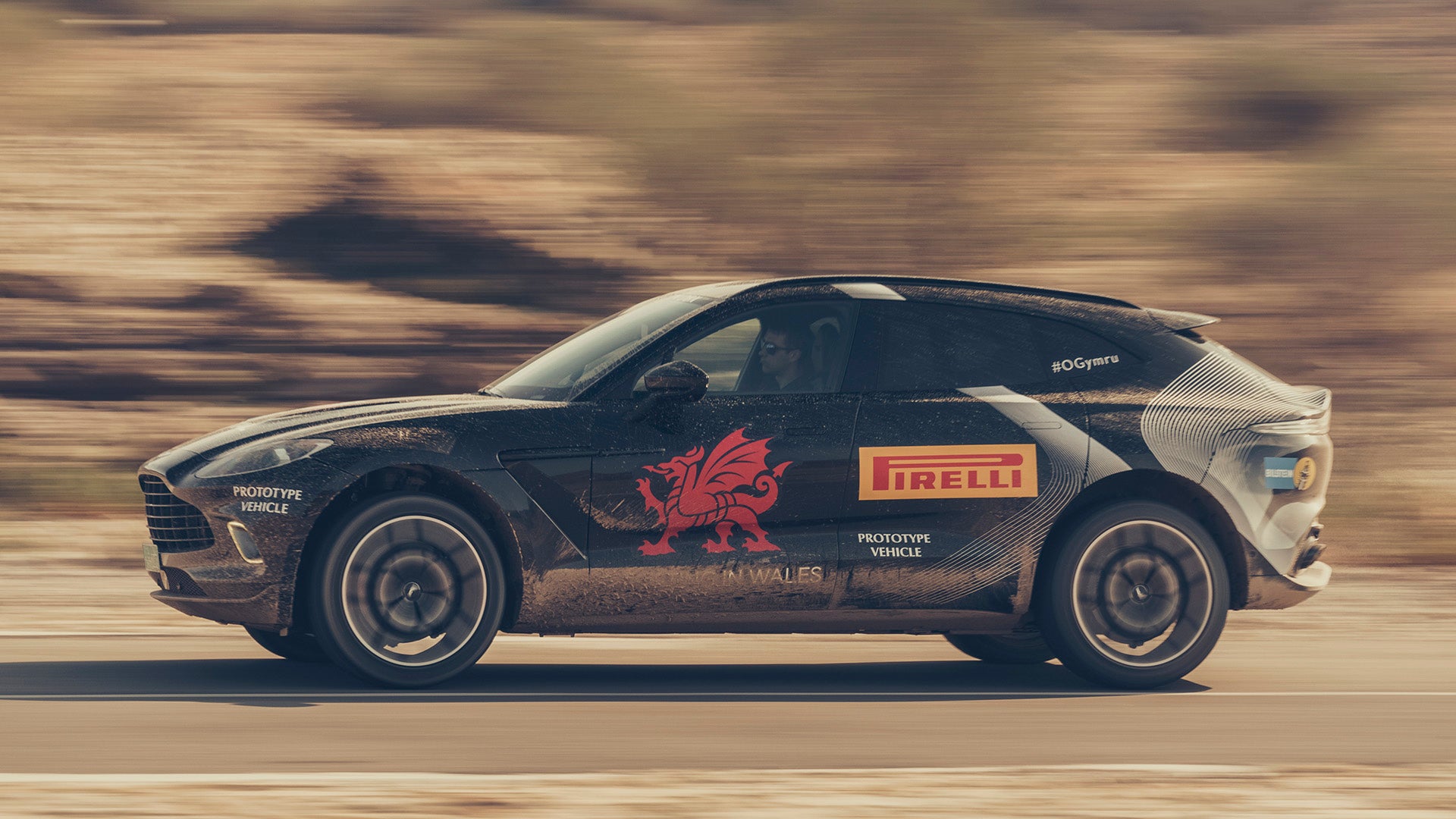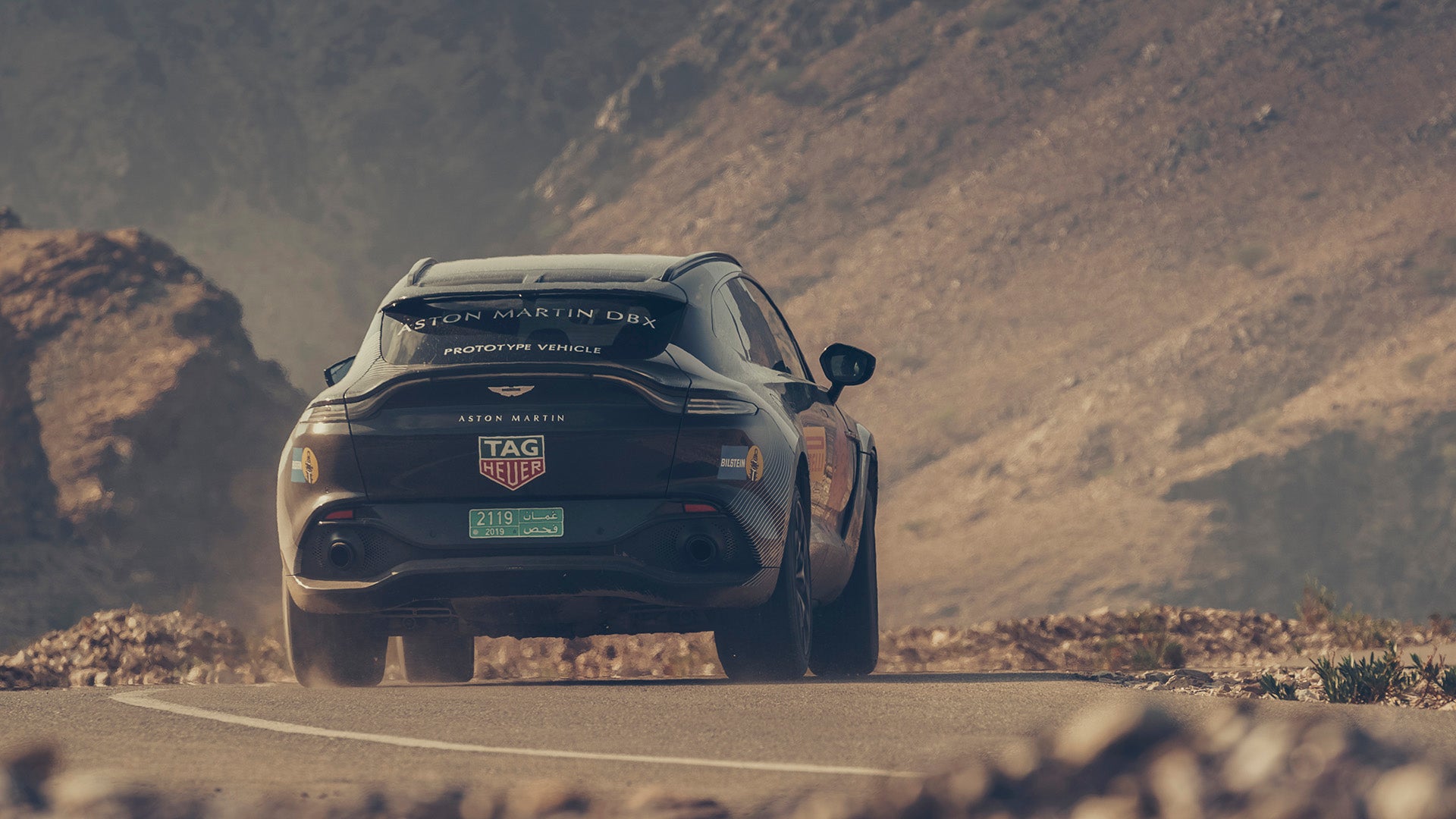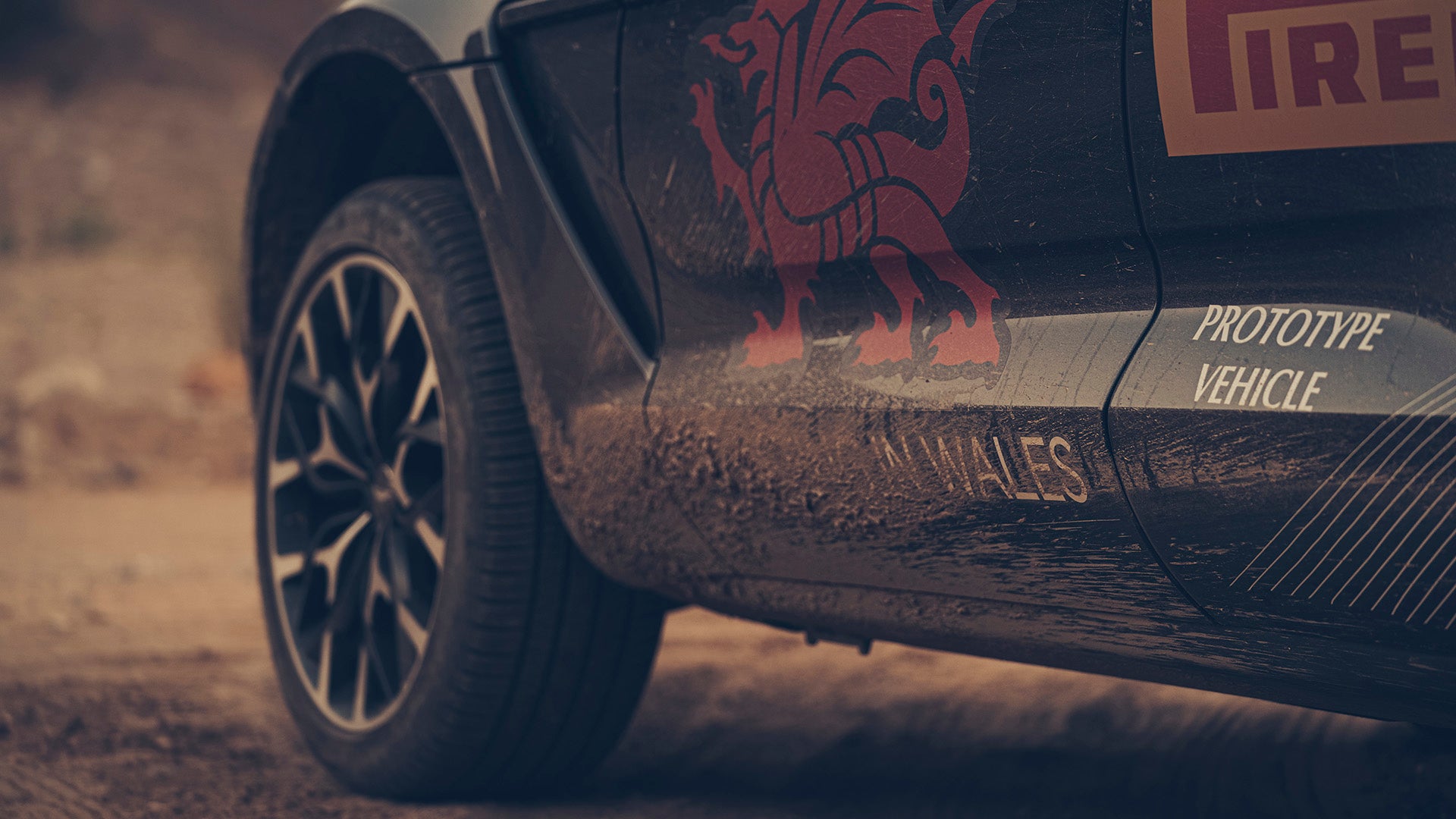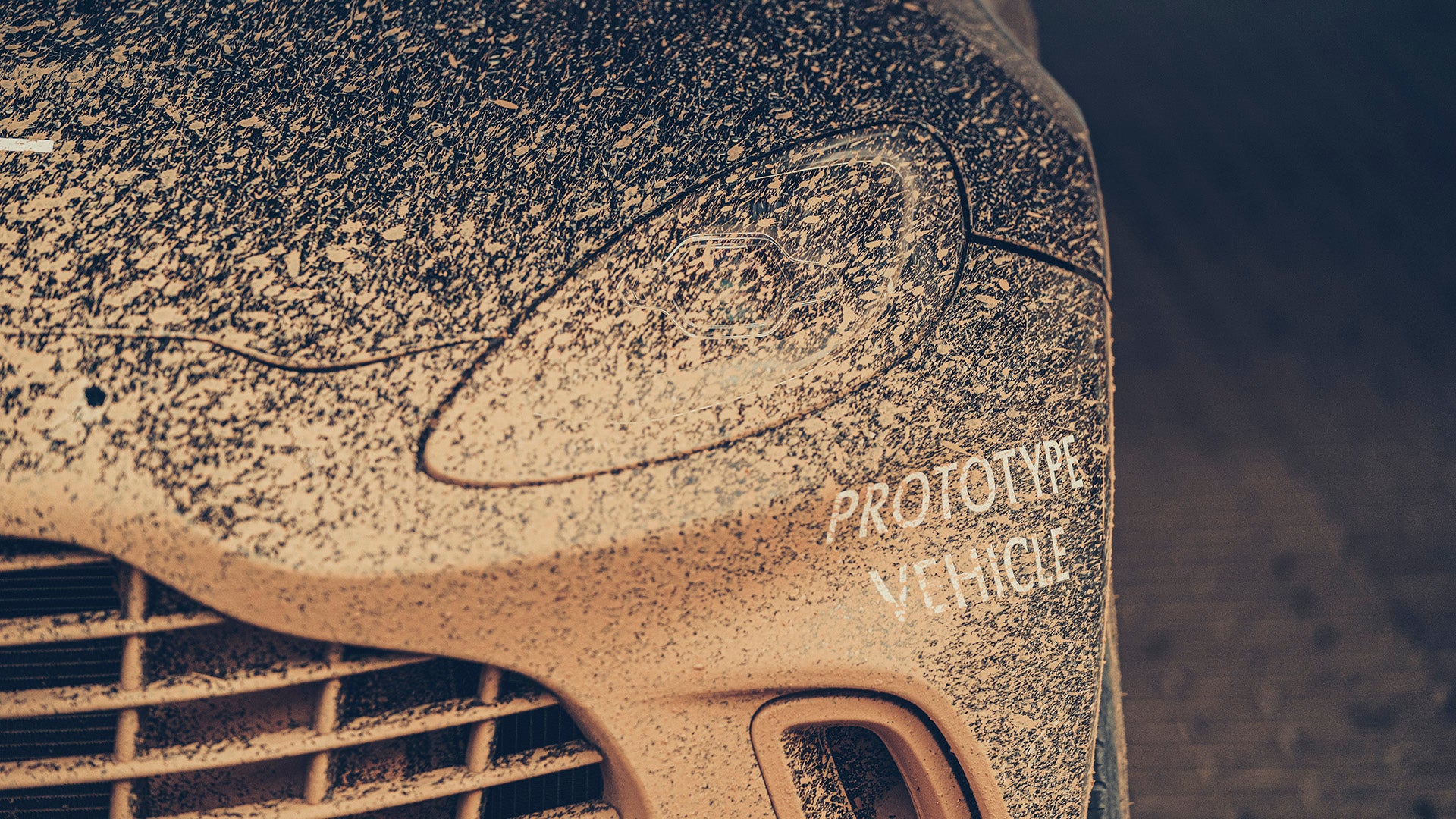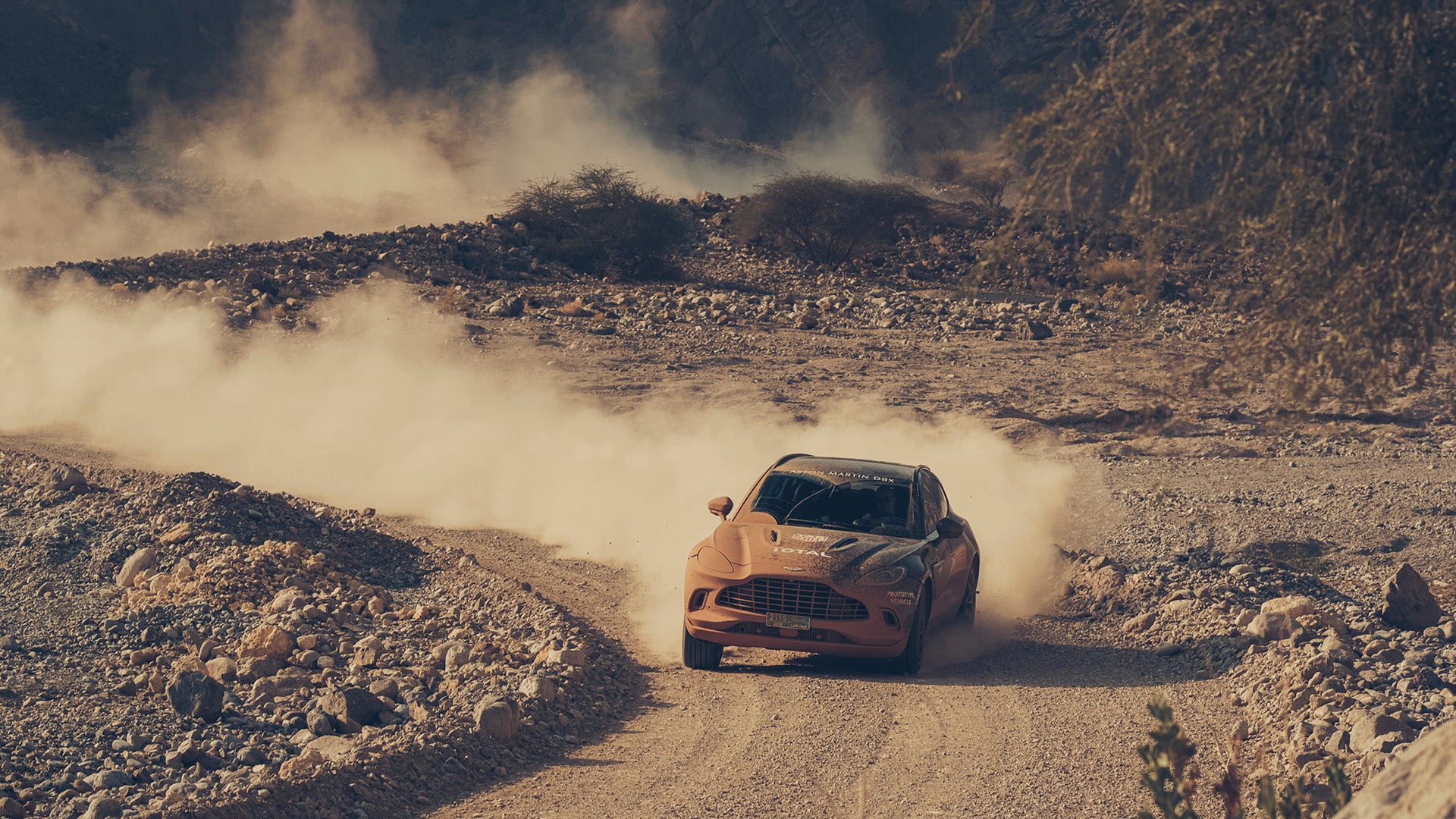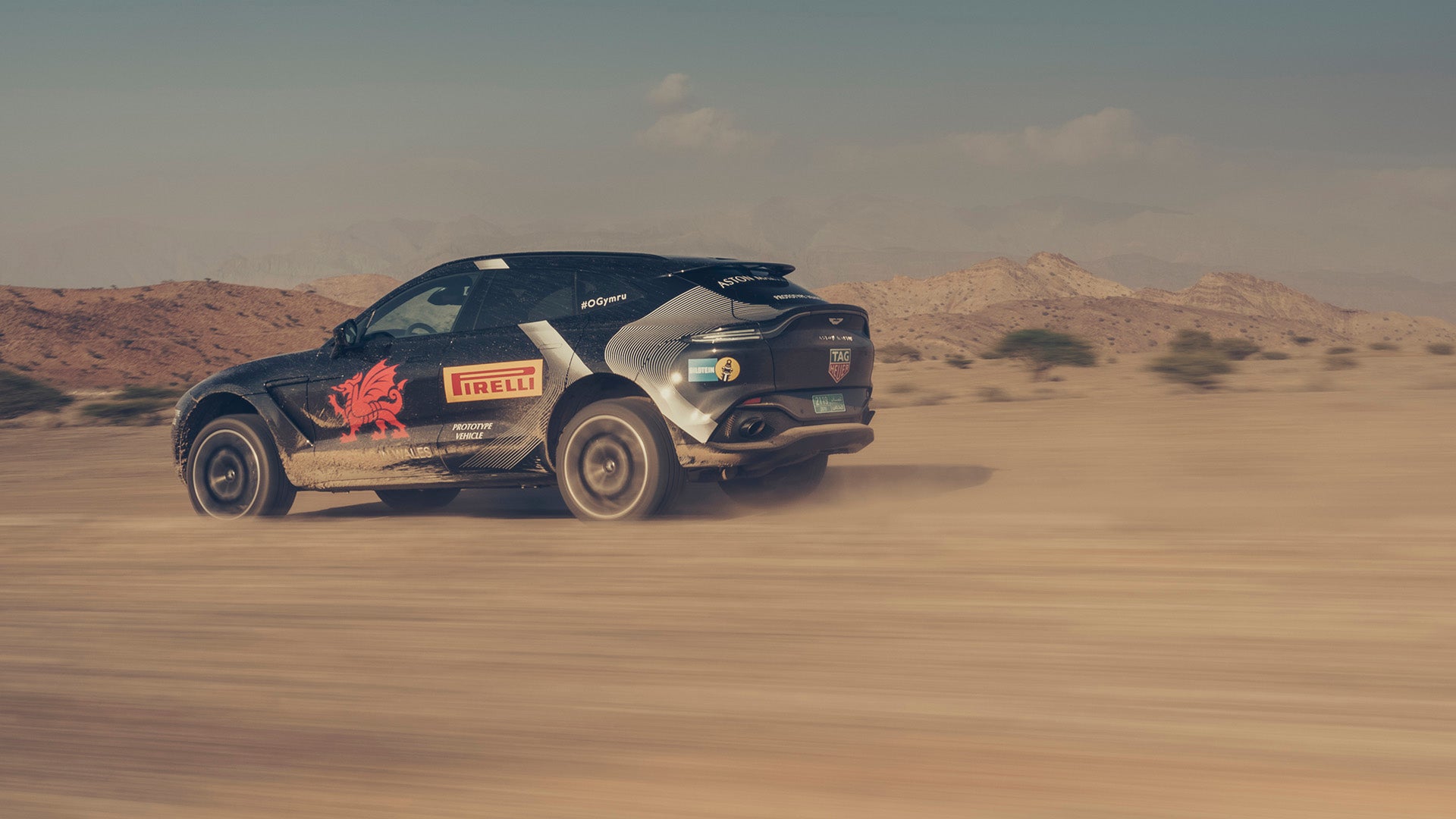Two things are abundantly clear as Aston Martin Chief Engineer Matt Becker hammers the throttle, hooks the wheel, and sends us sideways at 60 mph along a rock-lined gravel path deep in a long wadi in Oman. There has never been an Aston quite like the Aston Martin DBX. And also: the DBX is every bit an Aston Martin.
Working through that tension between historic identity and novel abilities is the mission for modern performance SUVs, especially those coming from European luxury outfits with more than a caviar spoonful of heritage on the line. So a first effort at an SUV from an automaker whose name is synonymous with slinky grand tourers, or midcentury class, or pure driver engagement—and if you're Aston, all of the above—must evoke all of that in a way that doesn't feel cheap and artificial in an entirely new form. It's a delicate, necessary dance, one we're going to see play out this decade at places like Lotus, Ferrari, and now Aston Martin.
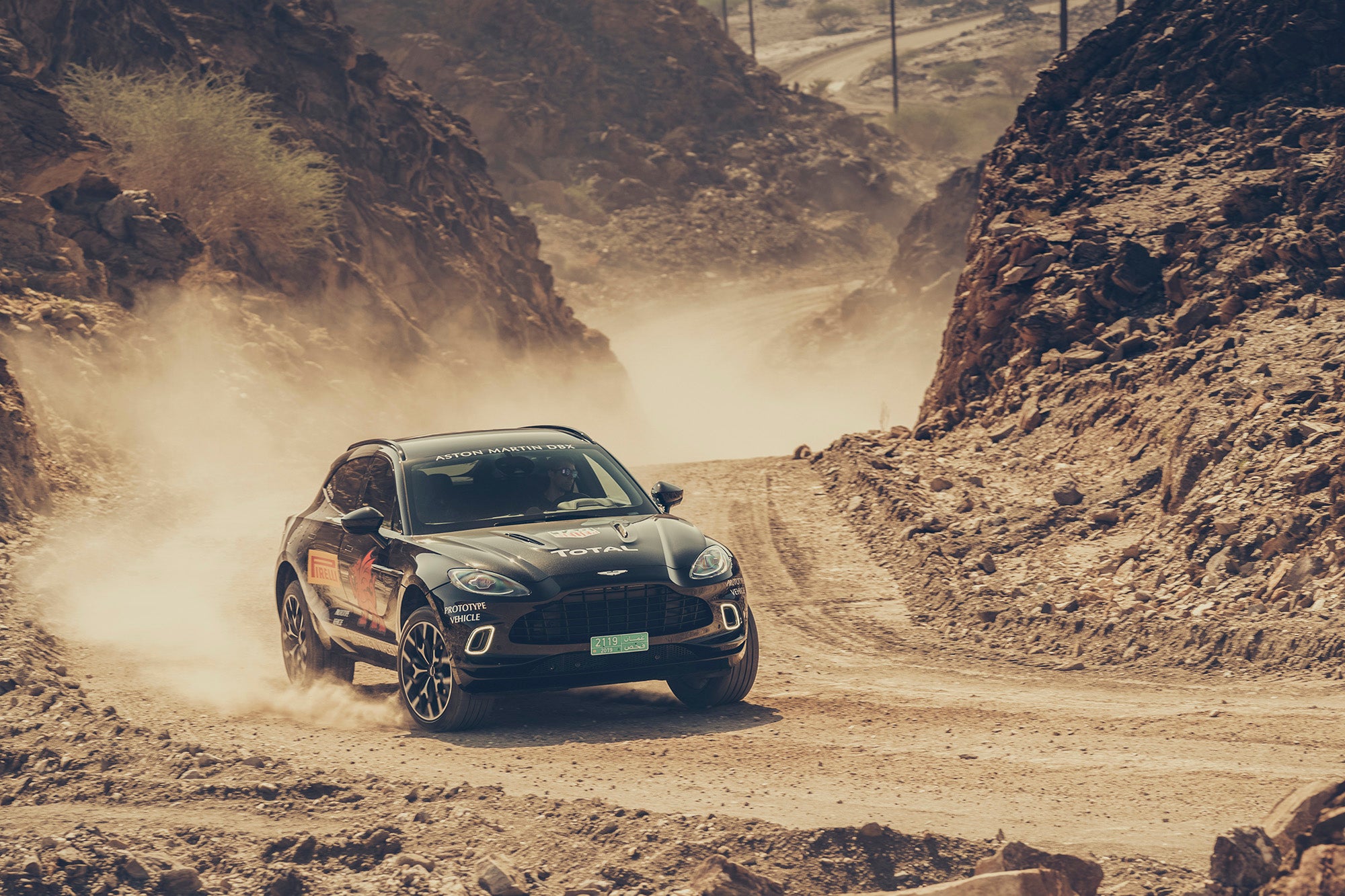
A cynic will always say the Aston Martin DBX exists to make money. They'll be right 100 percent of the time. But it is far more than a cash grab. The DBX is an inflection point for the company—the British brand's Porsche Cayenne moment, if you will. It's not an exaggeration to say that the financial health of the firm depends on the big, heavy crossover redefining people's expectations for what an Aston Martin can and should be. And while I can't say whether the $189,900 DBX will sell in large enough numbers to actually do that, I can report that it's extremely good. Maybe the best-driving SUV out there.
2021 Aston Martin DBX, By the Numbers
- Base Price: $189,900
- Powertrain: Twin-turbo 4.0-liter V8 engine | Nine-speed automatic transmission | all-wheel drive
- Horsepower: 542 hp @ 6,500 rpm
- Torque: 516 lb-ft @ 2,200-5,000 rpm
- 0-60 MPH: 4.3 seconds
- Top Speed: 181 mph
- Cargo Space: 22 cubic feet
- Towing Capacity: 5,940 pounds
- Quick Take: Aston Martin's first SUV is its finest effort in years.
Before we dive in, it's important to note the circumstances under which I drove this DBX prototype. It's a "1PT" build that's part of the inaugural batch to come off the shiny lines at Aston's new factory in Wales, where the SUV will be eventually be built en masse by a 750-strong workforce. Fundamentals like its bonded aluminum chassis, AMG-sourced twin-turbo V8 powertrain, 4Matic all-wheel-drive system, and three-chamber adjustable air suspension are all set as they will be on the production model.
Some things aren't finalized yet. The steering software, active anti-roll bars, and the all-important "pops and bangs" in the exhaust in Sport+ mode need work. It's very much a real test car, plucked out of the engineering fleet at random to provide an early driving preview. Warning lights sweep across the 12.3-inch instrument cluster screen at random; wires shoot out of the side of the center console. There are half-eaten bags of Haribo gummies in the glove box and door cubbies. The black leather interior is covered in scuffs and smudges. Everything is dusty. This thing is clearly a workhorse, not something destined for a dealer showroom.
Driving into the desert, Becker explains the extensive testing the DBX has undergone across three continents: endurance testing at Germany's Nurburgring, hot-weather torture trials in California's Death Valley, and now off-road durability on the Arabian Peninsula, logging tens of thousands of miles from which engineers are constantly pulling important development data for everything from steering calibration to the car's adaptive cruise control system. Becker will admit toying with the pops and bangs is his favorite part.
"Honestly, you can tune—do you want it to pop one, twice, three times? Do you want a louder bang? A softer bang? A random bang?" he asks. "I'm simplifying it a bit, but the Bosch system is literally like that. We were driving around Wales about three weeks ago tuning different bits on the car. We didn't have the pops switched on and then we switched it on and I started giggling because I quite like it, because I'm still a bit of a child. Then we went through it all, asking everybody 'Do you like this? Do you like that?'"
But enough about bangs. Becker is keen to show off the Aston Martin DBX in totality, the way myriad decisions fed back into the goal of making an SUV that legitimately drives like an Aston. The clean-sheet design marries an advanced aluminum chassis with fewer individual body panels, which in turn requires less NVH work to seal off, which saves weight, which makes everyone happy. That also means the addition of other Aston-firsts, like the air suspension, feel more holistically integrated, not tacked onto a frame that was never designed for it. Plus, it's a handy point of differentiation when even something like the Bentley Bentayga uses a modular Volkswagen Group platform.
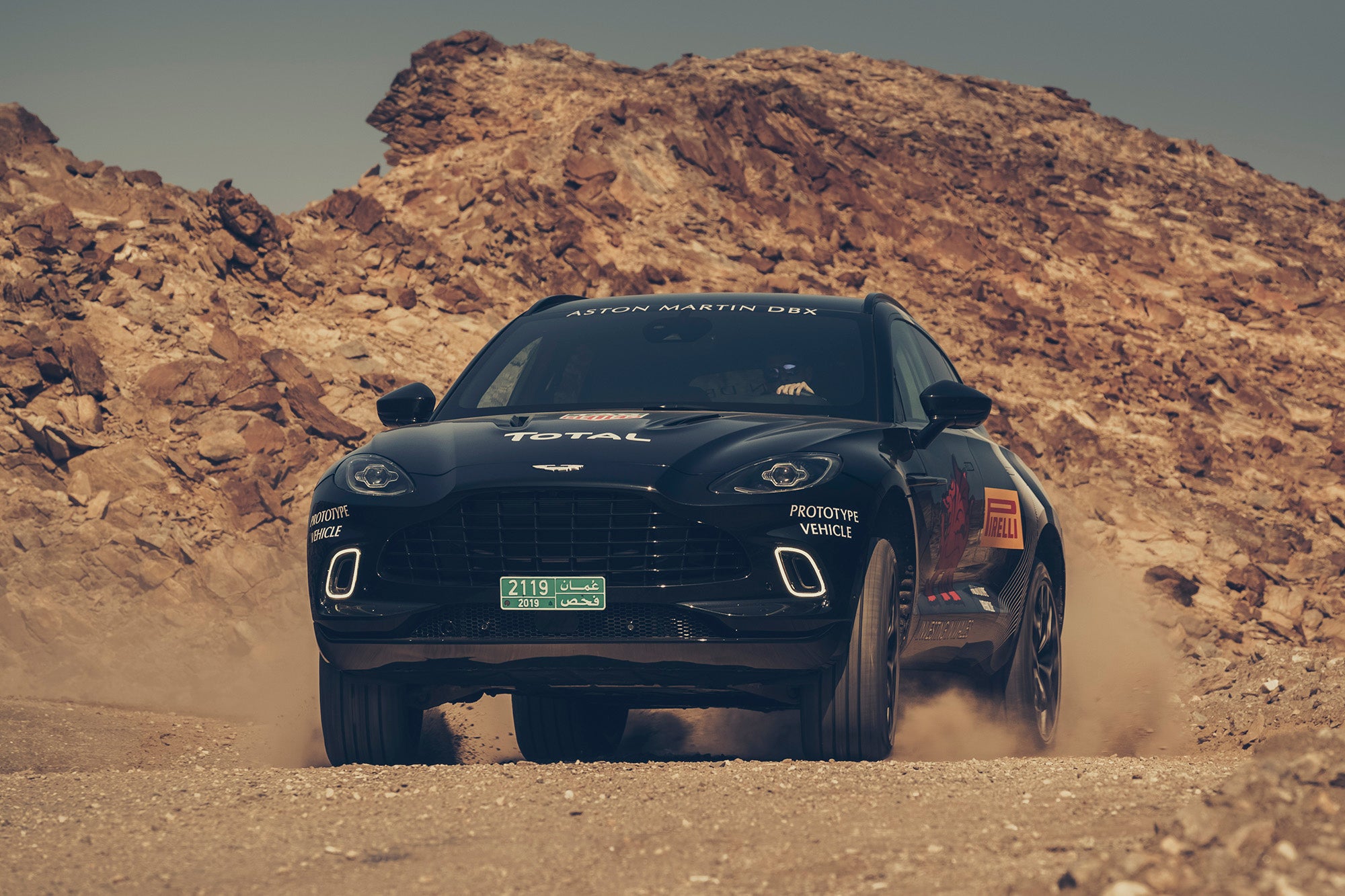
Speaking of the suspension, it's a huge part of the magic here. Made of cast aluminum with a double-wishbone setup up front, a multi-link rear, and triple-chamber airbags at all four corners, it's paired with a 48-volt active anti-roll bar on each axle that can push back against the weight of the car in a curve with over 1,000 pounds of force. GT mode serves as the default comfort setting; here, the ride is serene, almost cloud-like, with a dose of body roll that feels like a luxurious marker of heft. Sport mode in part sees the steering and dampers firm up and ride height drop almost 0.6 inches; Sport+ puts every system on its sharpest setting, drops the airbags another half-inch in height, and makes the DBX feel every bit a snarling six-figure exotic. The transmission shifts quickly and sharply with more noise than cabin-jolting aggression, and the fluid throttle response is addictive.
But even in Sport+, the ride is compliant enough to use the setting on a series of rock-strewn dirt roads in the rumpled foothills of Oman's Al Hajar Mountains without cracking my spine or even being mildly uncomfortable, really. Something like a Porsche Cayenne Turbo in Sport Plus mode is more rock-ribbed to its occasional benefit and constant detriment in the real world. The times where you'll be glad for an SUV that stiff will be far outnumbered by how often DBX owners will thank Gaydon for dialing in an appropriate amount of plushness.

As a result, foregoing the possibility of some track package down the line, it's very unlikely the Aston Martin DBX's still-unknown Nurburgring time will approach the 7:42.2 Audi RS Q8. The Cayenne Turbo will probably beat it at any road course. First and foremost, the DBX is a grand tourer, not a clinical performance machine. But because it's built with the same advanced engineering philosophy behind things like the Vantage, DB11, and DBS Superleggera, it takes to the demands of track driving (or its approximation on public roads) with a smooth, assured ease that feels like a natural extension of its character. It was made for this, even if it wasn't.
Powering the DBX is a familiar AMG-sourced 4.0-liter twin-turbo V8, the same brassy mill seen in the DB11, Vantage, and a whole bunch of Mercedes cars and SUVs. Here, it makes 542 horsepower and 516 pound-feet of torque, metered out through a Daimler nine-speed automatic transmission and a specially-tuned version of the German's 4Matic all-wheel drive system. The active center diff can send up to 47 percent of power to the front axle and the full 100 percent to the rear axle, where it's vectored further by a limited-slip diff with a little assist from the individual rear brakes.
Acceleration is impressive if not overwhelming, clipping 60 in 4.3 seconds on its way to 181 mph. Even in Sport+, there's a noticeable rearward heave when launching from a standstill as the DBX leans back on its haunches, the same way a Mercedes-AMG G 63 squats when you floor it. But it's entirely theatrical—there's no loss of steering from the lightened front end or squirrelly behavior from the rear.
One moving, it all works: the poise with which the DBX pivots and dives through turns, the smoothness with which you can throttle steer, the work of the still-developing anti-roll system to leave enough body dive in place to give you a clear-eyed sense of momentum. A small reminder that you're hustling almost 5,000 pounds of SUV through a curve isn't a bad thing. Neither is being comfortable while doing so.

And neither is a reminder that no matter what a professional car reviewer says, the limits of a vehicle are never fully explored until you've seen a race driver behind the wheel. Some might argue that it's a pointless exercise in a crossover that might never be redlined by its real owners, but when a company like Aston Martin stands up and says it's made a $200,000 SUV that really does drives like its sports cars, there's science to be done. Aston Martin's regional brand ambassador is Ahmad Al Harthy, a former Blancpain Endurance Cup racer who knows the canyon roads around Muscat like the back of his hand. It wasn't part of the official plan for the day, but Al Harty is in town and wants to see the DBX, so Aston's PR team asks if I wouldn't mind driving out to a deserted stretch of twisty roads free of the government's speed cameras to meet him.
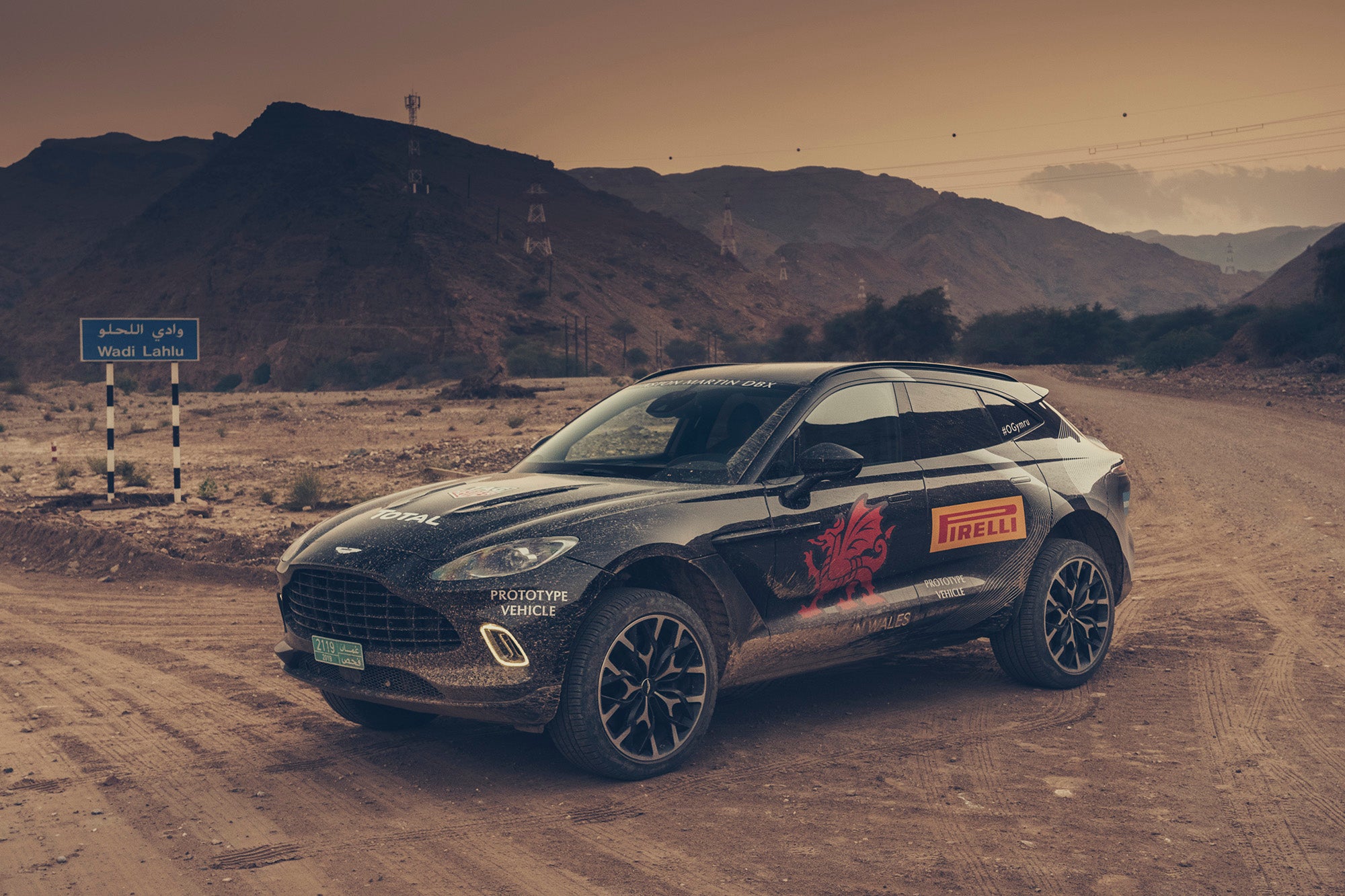
He's unfailingly gregarious and kind, a personality that all but vanishes within 20 seconds as he's throwing the DBX into his first corner in pure anger. Sitting in the bolstered backseat (with its 41 inches of legroom), it's a thrill to watch Al Harthy fully send the thing into corner after corner, braking late with those six-piston front calipers and reading the suspension just right to maximize the use of weight transfer in S-bends. It's far more of an organic conversation with road than I expected, the kind of full driver engagement that's been nannied out of a lot of super SUVs.
Also not on the official docket—officially speaking—was the high-speed off-road testing I mentioned up top with Becker at the wheel. As a former Lotus engineer with the Elise on his resume, it doesn't take much to goad him into doing silly stuff behind the wheel, and a completely deserted wash (save for some sheep) with a tasty set of curves in the dirt road traversing it proved to be too much for him. I'd already seen how the DBX was perfectly comfortable galloping along the gravel path in Sport+. What I hadn't seen is what it can do on dirt driven by someone who only has to answer to CEO Andy Palmer himself.
Approaching the first turn at over 60 mph, Becker flicks the wheel and stabs the throttle to start a long, precise slide bringing the car's expensive nose within inches of the pointy apex. It's eminently controllable despite working with a wheelbase of over 120 inches, and Becker spins the wheel to catch and hold the counterslide as the road curves again in the opposite direction. The throaty roar of the AMG V8 bounces off the canyon walls in an eternal echo. He's smiling. I'm smiling. Everyone is smiling. Turns out the DBX behaves not unlike a rally DB11 when it's really pushed, realizing the vision of what would happen if you lifted an Aston Martin and turned it into a gravel road slayer.
The DBX sits with 7.5 inches of ground clearance augmented by an entirely flat underfloor, but two off-road driving modes (Terrain and Terrain+) raise that to 9.3 inches. Off-road angles in Terrain+ are similarly impressive at 25.7-degree approach angle, 18.8-degree breakover, and 27.1-degree departure. It'll wade 19.7 inches of standing water. Even the anti-roll system pitches in when you're mucking about to boost articulation on a given wheel when the computer senses it's necessary. Becker claims Aston didn't set out to give the DBX any sort of off-road cred, but the basic abilities of the chassis and the air suspension mean it can go farther than 98 percent of owners will ever realize.
Even as an unfinished prototype, the Aston Martin DBX is excellent. In fact, if the final product can be this good or better, the DBX could end up the new yardstick for luxury performance SUVs. With the exception of maybe the Rolls-Royce Cullinan, it does the best job out of any six-figure five-seater in melding the demands of the nameplate on the nose with the realities of the form. It is every inch an Aston Martin, even if it's bigger, more complex, and more ambitious than any Aston that's come before it. There's no hiding that old soul—and no reason to, either.
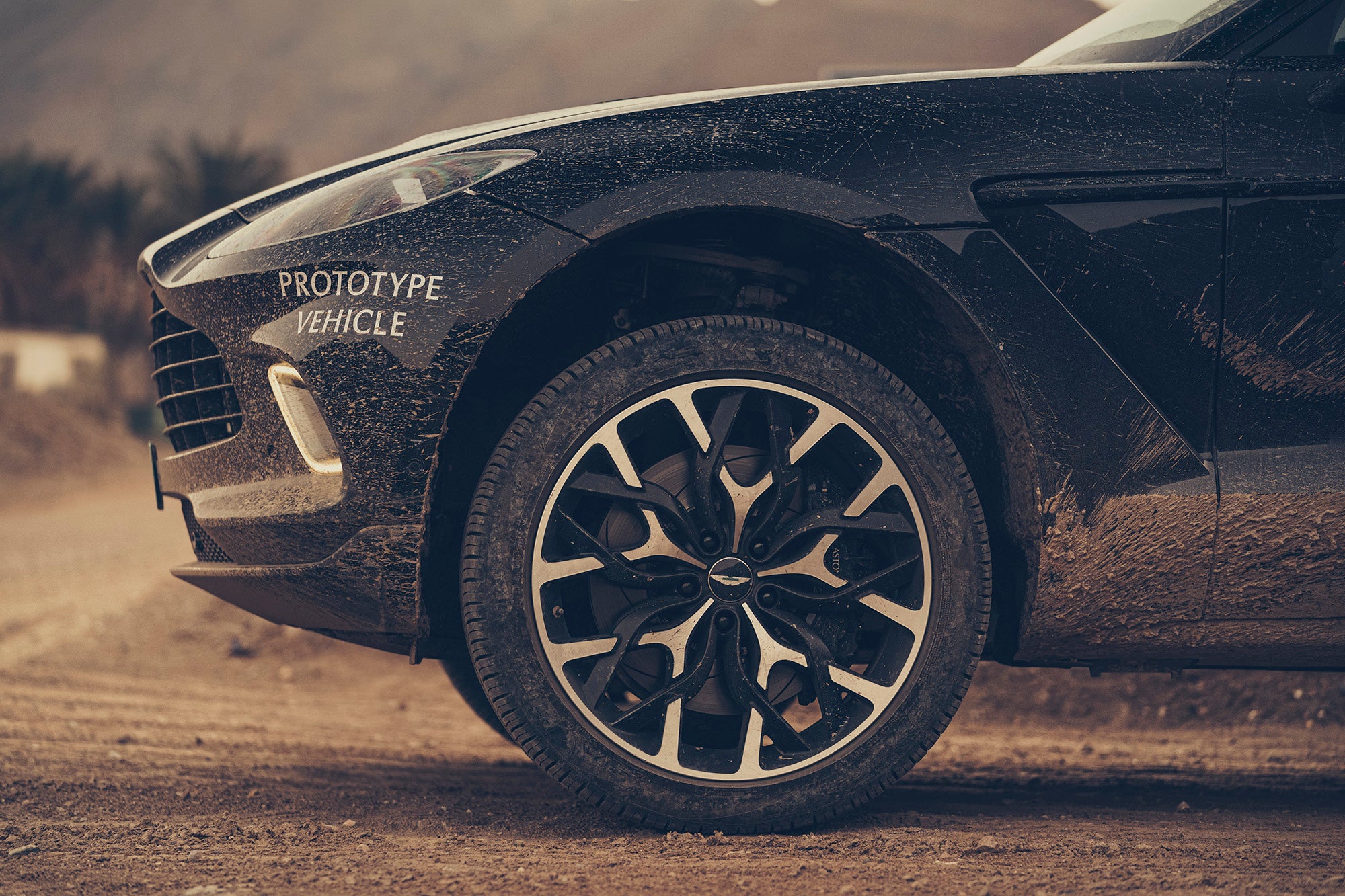
Got a tip? Email the author: [email protected]

